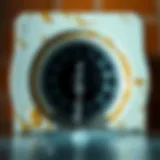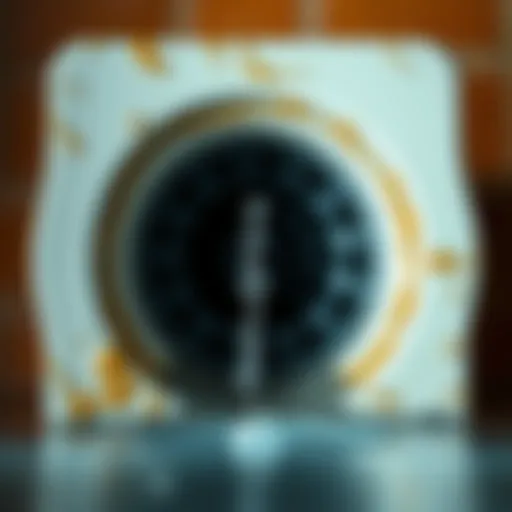Clean Outdoor Windows with Vinegar: A Complete Guide
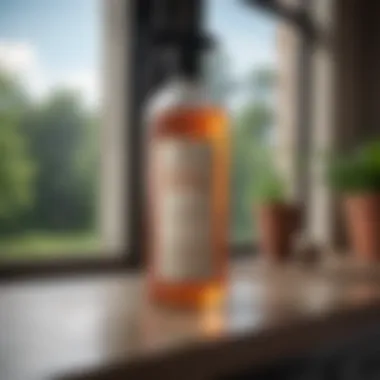

Intro
Cleaning the windows of your home isn't just a chore; it's a chance to brighten up your space and enhance the beauty of your property. The right approach can not only make your windows sparkle but also contribute to the overall aesthetics of your residence. Among various cleaning methods, using vinegar stands out as a practical and eco-friendly solution that can yield remarkable results. In this guide, we'll explore why vinegar is an optimal choice, what you need to get started, and how to tackle some common challenges you might face while cleaning your windows.
By understanding the techniques and tricks associated with cleaning outdoor windows with vinegar, you’ll not only improve visibility and curb appeal but also embrace a greener lifestyle. So, get ready to roll up your sleeves as we delve into the nuts and bolts of window cleaning with vinegar, breaking down the steps to make this routine task as efficient and effective as possible.
Understanding the Benefits of Vinegar for Window Cleaning
In this section, we explore why using vinegar is not just a trend, but rather a smart choice for cleaning outdoor windows. Vinegar has been a household staple for decades, touted not only for its culinary merits but also for its cleaning prowess. Window cleaning, in particular, benefits significantly from this humble solution. When made aware of its unique advantages, one can understand how such a simple ingredient can lead to astonishingly clear results.
The Eco-Friendly Advantage
Vinegar is an eco-conscious alternative to chemically laden cleaners available at your local store. Many window cleaning products contain harsh substances that can endanger both the environment and human health. In contrast, vinegar is biodegradable and does not contribute to toxic runoff.
Consider the impact of your cleaning choices. By opting for vinegar, you're reducing your carbon footprint and supporting sustainability. Not to mention, it's often easier on surfaces too, which means less risk of damage and a longer lifespan for your windows.
Moreover, using products that are free from synthetic additives can help you maintain a healthier indoor air quality. Why make things complicated when nature provides such a straightforward solution?
Cost-Effectiveness
Let’s talk about the wallet. One of the most significant advantages of vinegar is its sheer affordability. While commercial cleaners can drain your finances over time—especially if used frequently—vinegar’s price tag is incredibly manageable. It's a fraction of the cost of those bottled brands that promise the world but deliver mixed results.
For a few dollars, you can purchase a gallon of vinegar which can create multiple batches of cleaning solution. The dilution process allows you to stretch your budget while still achieving a sparkling finish on those windows. Essentially, you're investing in a long-term solution rather than a quick fix.
"Using vinegar as a cleaning agent is like finding money in your pocket; it works wonders without costing a fortune."
Natural Disinfecting Properties
Beyond just cleaning, vinegar also carries impressive disinfecting abilities, making it a two-for-one deal. Vinegar contains acetic acid, which can effectively kill bacteria and mold spores that might be lingering on your windows. This is especially crucial for homes located in humid climates where moisture can foster unwanted growth.
Incorporating vinegar into your cleaning routine not only leaves your windows spotless but also safeguards against health hazards. It stands as a testament to how natural products can perform just as well, if not better, than synthetic ones in ensuring a safe living environment.
Utilizing vinegar is about combining practicality with purpose, creating a sense of responsibility towards your home and its upkeep.
With its eco-friendliness, affordability, and natural disinfecting properties, vinegar emerges as a champion in the realm of window cleaning. Embracing this choice can lead to sustainable living while achieving those brilliantly clean windows we all desire.
Preparing for the Cleaning Process
Before diving into the nitty-gritty of cleaning those outdoor windows, it pays to get your ducks in a row. Preparing adequately is just as critical as the actual cleaning itself. It not only streamlines the process but also ensures you’re fully equipped to tackle those tough spots without wasting precious time. This stage sets the tone for the entire cleaning endeavor, allowing for a smoother experience and better results.
Gathering Essential Materials
Gathering your cleaning materials might seem like a chore, but it’s a key step that can’t be overlooked. When you arm yourself with the right tools and ingredients, you’re setting the stage for a successful cleaning session.
Vinegar Types and Concentrations
When it comes to vinegar, not all varieties are equal. You’ll find white vinegar is the heavyweight champ in the window cleaning arena. Its higher acidity and lack of color make it perfect for cutting through dirt and grime without staining your surfaces. On the flip side, apple cider vinegar, while aromatic, isn't as effective for window cleaning due to its tinted nature. A common concentration for cleaning is 5% for household usage, but if you want to up your game, distilled white vinegar with an even higher acidity can work wonders.
Its ability to dissolve mineral deposits and remove streaks is invaluable. However, be cautious as too strong a concentration could potentially dull some delicate window frames or finishes.
Microfiber Cloths and Squeegees
You can't underestimate the power of the right cleaning materials, and microfiber cloths are top-notch. They are excellent at trapping dirt and dust, ensuring a streak-free finish. Their unique texture allows them to absorb more liquid than traditional cloths, which means less work for you when cleaning those stubborn surfaces. Meanwhile, squeegees are the unsung heroes of window cleaning. They help to quickly remove excess liquid, preventing water spots from forming.
Both tools serve their purpose neatly: microfiber cloths for applying the cleaning solution and squeegees for the final wipe down. However, it’s important to replace them regularly since worn-out cloths can lead to scratches and squeegees losing their effectiveness.
Optional Additives for Enhanced Cleaning
If you want to kick it up a notch, consider using some optional additives. Adding a few drops of dish soap can enhance the cleaning power, particularly for greasy spots. A little bit of cornstarch mixed with your vinegar solution can help create a polishing effect once you wipe it down.
While not necessary, these additives can provide a helping hand in your window cleaning ventures. Just be mindful not to go overboard; too much soap can leave a residue, defeating the purpose of that streak-free shine you aim for.
Choosing the Right Time for Cleaning
Timing is everything. Ideally, you want to pick a day that's not too sunny, as direct sunlight can cause the cleaning solution to evaporate too quickly, leaving streaks behind. Early mornings or late afternoons, when the sun is at a lower angle, are excellent choices. That way, you can work effectively without the heat working against you.
Safety Precautions
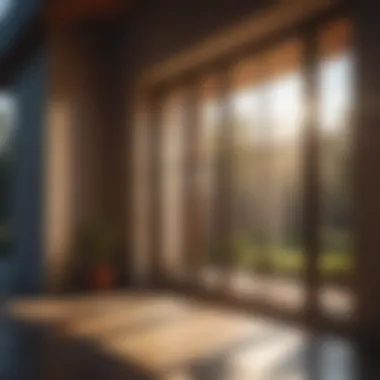

Clean windows might be your goal, but ensuring your safety during the process is paramount. Respecting safety measures not only prevents accidents but also helps you work more efficiently and confidently.
Proper Ladder Usage
If your windows are hard to reach, you'll likely need a ladder. Always make sure it’s fully extended and stable before climbing up. Position it at a 75-degree angle for maximum stability. Remember: safety first! Using a ladder correctly will keep you safe while allowing you to reach even the highest panes.
Using Non-Slip Footwear
Don't get caught slipping! Your choice of footwear impacts your overall stability when working on ladders or uneven surfaces. Opt for shoes with good grip and support. It’s a small detail that makes a world of difference. Slipping could lead to nasty falls, so take the time to choose the right shoes.
Weather Considerations
Lastly, think about the weather. Cleaning windows during a light drizzle might seem practical, but it can actually hinder the process. Ideally, aim for a dry, mild day. Windy conditions can make it tricky to handle the squeegee, while rain can compromise the effectiveness of your cleaning solution. Being mindful of the weather conditions ensures that you get the best results from your efforts.
Mixing the Perfect Vinegar Solution
Understanding how to mix the right vinegar solution is paramount when it comes to achieving a streak-free shine on your outdoor windows. This mixture not only influences the efficacy of your cleaning effort but is also crucial for the longevity of your windows. Vinegar, a natural acid, can cut through grime and dirt like a hot knife through butter, but the proportion you use may vary depending on the level of mess you need to tackle.
By knowing how to formulate the perfect cocktail of vinegar and water, you can enhance the cleaning power of vinegar while minimizing the risk of any potential damage to window components. It’s about striking a delicate balance.
Determining the Ideal Ratio
When it comes to concocting your vinegar solution, you want to ensure that you’re not flying blind. For an effective cleaner, a common recommendation is to stick to a 50/50 ratio of vinegar to water. This mix serves as a strong yet safe solution for most outdoor windows. However, if your windows are particularly grimy or have never seen a good cleaning in a while, you might want to up the vinegar concentration to 70%. Here’s a quick guide to different scenarios:
- For routine cleanings, a simple 1:1 ratio of water to vinegar works wonders.
- If stubborn stains are lurking, try 3 parts vinegar to 1 part water.
- If it’s a heavy-duty job, consider using straight vinegar, especially for spots with calcium buildup.
Remember that too much vinegar can lead to streaks, as it dries quicker and can leave a residue if not wiped away properly. Always test your solution on a small, inconspicuous area first to be sure it won’t damage any coatings or finishes.
A well-mixed solution will not just clean; it protects and promotes a more sustainable cleaning routine.
In addition, the type of vinegar can differ slightly in effectiveness. While white distilled vinegar strikes the right notes for cleaning, other varieties, like apple cider vinegar, can smell nicer but may not be as effective for window cleaning tasks. A simple calculation is crucial. When you pour, remember that a little vinegar goes a long way!
Step-by-Step Window Cleaning Technique
Cleaning windows can be as effortless as a Sunday morning, or it can feel like pulling teeth. The goal of honing a step-by-step technique is paramount to ensuring not just cleanliness, but also streak-free radiance. This method is about establishing a routine that becomes second nature, allowing outdoor windows to exude clarity without hassle.
Application Methods
When it comes to application methods, the choice can make a world of difference in efficiency and effectiveness. You have a couple of options, each with its advantages.
Using a Spray Bottle
A spray bottle is a favorite among many for a reason. Its squirt-and-spray method allows for even distribution without soaking the window unnecessarily. This method is particularly helpful when facing tall windows or tricky angles; just aim and spray. The light mist can cover surface areas without too much fuss, which is a huge plus.
One unique feature of using a spray bottle is its portability. You can easily take it around with you as you tackle each window. Just fill it up with your vinegar solution, and you're ready to go. However, it does have its limitations. For larger surface areas, it might take more effort to ensure an even clean compared to other methods.
Employing a Bucket and Cloth Approach
On the flip side, using a bucket and cloth can maximize cleaning efficacy on larger windows. This method involves dipping a cloth into the vinegar solution and spreading it across the glass. This approach allows for a good amount of cleaning solution to adhere to the cloth, ensuring complete coverage without excess drippage.
One clear advantage to this method is that it can be more thorough. The scrubbing action from the cloth helps lift dirt and grime that might have accumulated over time. Yet there's a catch—this method requires a bit more physical effort and may lead to a messier cleaning process if not handled with care. Keeping a towel nearby is always a good idea to catch any slips.
Removing Stubborn Stains
Not all windows are created equal. Some come with their fair share of challenges, and that’s where specialized strategies come into play. Tackling stubborn stains can seem as daunting as climbing Everest, but with the right knowledge, it becomes manageable.
Strategies for Hard Water Spots
Hard water spots are like uninvited guests, leaving their mark on your windows. These spots typically have mineral deposits that stick to the glass surface, and vinegar shines in this particular fight. Its acidic nature helps break down those stubborn residues.
A method that works exceptionally well is to soak a cloth in undiluted vinegar. Press this cloth against the affected area for a few minutes, allowing it to penetrate the deposits. After a little soak, use a clean cloth to wipe the area, and you should see those hard spots disappear. One thing to note is that if the stains are excessive, you might need to repeat this method for optimal results.
Addressing Grease and Grime
Grease and grime tend to accumulate around kitchen windows, making them one of the toughest opponents in window cleaning. The good news is that vinegar, when combined with a touch of baking soda, can work wonders.
For this process, sprinkle some baking soda directly onto the greasy spots and then spray the vinegar solution over it. The fizzing reaction created helps lift the grime from the glass. Wipe the surface with a cloth after it stops fizzing, and voila! Your window is now grime-free. Remember, this method not only cleans but also deodorizes while being eco-friendly.
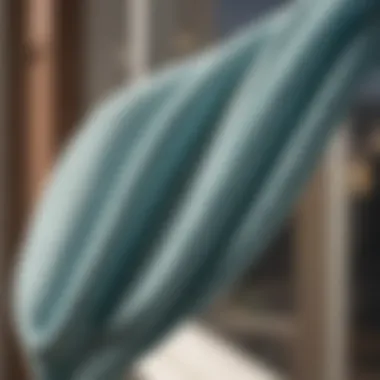

Final Steps for Streak-Free Windows
Finishing strong is key. Once you’ve applied your cleaning method of choice and removed stains, you can take several steps to ensure that your hard work shines through without streaks. One crucial step is to use a clean, dry microfiber cloth or a squeegee. This is particularly effective because these materials absorb moisture well and won’t leave lint behind.
A useful tip is to wipe from top to bottom in a zigzag pattern. This technique can help distribute any remaining water evenly and minimizes the chance of dripping. Indeed, finishing with a dry cloth can catch any surprises that may still cling on.
"A little bit of patience goes a long way when it comes to cleaning windows. The result is worth the effort."
Tips for Long-Lasting Cleanliness
Maintaining clean outdoor windows requires more than just a one-time effort. It’s about establishing a routine that ensures they stay clean, clear, and streak-free over time. The topic of long-lasting cleanliness doesn't just focus on the immediate visual result but also encompasses the steps that can prevent the buildup of dirt, grime, and other contaminants. The effectiveness of these steps can greatly increase the longevity of the cleanliness achieved with your vinegar cleaning method.
Regular Maintenance Routines
Scheduling Cleaning Intervals
Having a set schedule for cleaning your windows plays a significant role in maintaining clarity. Regular cleaning intervals not only enhance the visibility of your home but also ensure that dirt does not have time to settle or accumulate. A key characteristic of scheduling these intervals is the predictability it offers; for instance, cleaning every two months can keep clutter to a minimum.
One unique feature of regular intervals is that it limits the need for deep cleaning sessions where you're fighting harder against stains and residue. By staying on top of your cleaning, you drastically reduce time and effort needed on any given cleaning day. However, the disadvantage could be that some homeowners may find themselves overwhelmed by the strictness of a schedule, leading to procrastination, especially during busy seasons.
Choosing the Right Weather Conditions
Picking the right day to wash your windows can elevate your results. Clear days with mild temperatures are ideal for window cleaning. The sun, while it provides light, can also dry your vinegar solution too quickly, leading to streaks. The primary characteristic of selecting optimal weather is ensuring a more effective drying process that helps avoid these streaks.
A fresh, mild day not only allows the cleaner to work its magic but also makes the overall task more pleasant. The distinction of this facet is its contribution to achieving a much cleaner finish with half the effort. However, the flip side is the limitation that comes with only cleaning in favorable conditions, which may be tricky in places with unpredictable weather.
Preventing Future Build-Up
Using Protective Coatings
Protective coatings on windows serve as a shield against dirt and grime, mirroring the benefits of using vinegar for cleaning. This feature is particularly beneficial as it reduces the frequency of your cleaning sessions. When applied, these coatings repel dirt and contaminants while allowing water to bead off the surface.
This method stands out because it addresses the root cause of buildup rather than just responding to it. However, the challenge with protective coatings can lie in proper application, which, if done incorrectly, can cause more frustration than benefit.
Careful Landscaping Choices
The placement of plants or trees around your home can have a surprisingly significant impact on window cleanliness. By consciously choosing landscaping options that do not drop debris onto your windows, you can dramatically reduce the dirt accumulation over time. A key advantage to careful landscaping is that it contributes to an overall cleaner aesthetic.
One downside to this method might be the limited options if you're working with a fixed, mature garden. However, thoughtful consideration in the planting process can save you countless hours in scrubbing later on.
Incorporating Other Natural Cleaners
Baking Soda for Stubborn Stains
When vinegar doesn't quite cut it, baking soda can step up to tackle stubborn stains. Its gritty texture makes it perfect for scrubbing off tough residues without scratching the glass. This approach is a beneficial addition to the vinegar strategy, especially for those tougher spots that refuse to budge.
The unique feature of baking soda is its ability to work in tandem with vinegar, creating a fizzy reaction that can lift dirt and grime effortlessly. However, miscalculating the amounts or scrubbing too hard can potentially damage the surface.
Essential Oils for Freshness
Adding essential oils to your vinegar solution can provide an appealing scent that enhances your cleaning process. This approach is attractive for those who value not just a clean finish but also a fresh-smelling environment. The key characteristic here is the sensory satisfaction it brings to the mundane task of cleaning.
Interestingly, the unique feature of combining essential oils is that it elevates the entire experience, encouraging more frequent cleanings. While essential oils enhance the aroma, overusing them can sometimes lead to a residue, which necessitates another round of cleaning.
Consistent attention to your window cleaning routine can make a world of difference, allowing you to enjoy both the clarity of your windows and the comfort of your home.
Addressing Common Challenges
Cleaning outdoor windows can turn into quite a task, especially when facing various challenges. Understanding these difficulties is integral to achieving satisfactory results. This section zeroes in on the common obstacles one might encounter while cleaning windows using vinegar and provides effective strategies to overcome them.
Dealing with Extreme Weather Conditions
When dealing with the great outdoors, weather often plays a major role in any cleaning endeavor. Harsh sun, drizzling rain, or gusty winds can complicate the cleaning process significantly.
- Sunny Days: Cleaning windows under direct sunlight often leads to rapid drying, which can cause streaks and spots. To combat this, consider choosing early mornings or late afternoons for your cleaning spree. Times when the sun is less intense help ensure your vinegar solution doesn't dry too fast, allowing for a proper clean without leaving a mess behind.
- Rainy Days: While it might seem counterintuitive, cleaning windows just before a rainstorm isn’t always a bad idea. The rain can help rinse away any remaining vinegar residue. But going out there drenched isn't the plan. A solid approach is to monitor the forecast and use vinegar appropriately right before a rain shower is expected.
- Windy Conditions: High winds can scatter debris and dirt onto freshly cleaned surfaces. If you're facing a breezy day, it may be best to pause your window cleaning until the winds die down. This helps in keeping things neat and tidy without having to redo your hard work.
Navigating Different Window Types
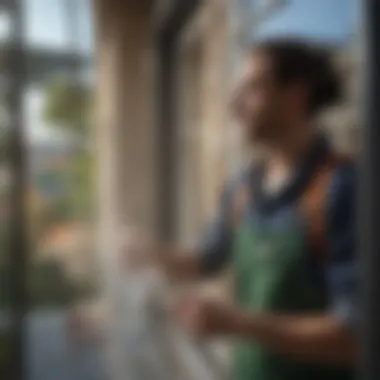

Different types of windows present their own unique cleaning challenges and benefits. Understanding the features of each can simplify the cleaning process.
Double-Hung Windows
Double-hung windows are a common choice for many homes due to their versatility. This type allows for both the top and bottom panes to slide open.
Their prominence lies in ease of cleaning—since both sashes can tilt inward, reaching each side for a thorough clean becomes much simpler.
- Benefits: The ability to tilt in means you can take a closer look and clean more effectively without strain. This feature allows you to clean the exterior of the top sash from the inside, which minimizes the need for ladders in many cases.
- Disadvantages: However, they can also gather a good bit of grime at the very top, making it a bit tougher to keep them pristine if not routinely maintained.
Casement Windows
Unlike double-hung windows, casement windows are hinged at the side. They swing open, allowing for better airflow but presenting a different challenge when it comes to cleaning.
- Key Characteristics: Their design enables them to catch the breeze, which can be an advantage in terms of ventilation. When it comes to cleaning, however, these windows can be trickier to manage because you need to extend them outward, often requiring a different angle of approach.
- Benefits: On the bright side, casement windows offer an unobstructed view since there are no frames in your line of sight when the windows are closed, making them an attractive feature.
- Disadvantages: However, the hinging mechanism can accumulate dirt in the crevices if not maintained well. Being thorough is key, or the spots can become stubborn.
By navigating through these challenges associated with various window types and extreme weather conditions, homeowners can better strategize how to approach their outdoor window cleaning with vinegar effectively.
Exploring Alternatives to Vinegar
When it comes to cleaning outdoor windows, vinegar is often hailed as a champion in the realm of eco-friendly solutions. However, exploring alternatives is an essential part of this guide. Different cleaning agents offer their own unique benefits, and considering these options allows homeowners to make informed decisions.
One notable aspect of considering alternatives is that not every window surface or condition is fit for vinegar cleaning. By knowing what other solutions are out there, an individual can tackle any challenge thrown at them without a hitch. Whether it’s dealing with stubborn grease or mineral deposits, let's delve into some alternatives worth considering.
Commercial Cleaning Products
Comparative Effectiveness
When looking at commercial cleaning products, the effectiveness often stands at the forefront. Various cleaning solutions specifically designed for glass can face off against vinegar, and their results might surprise you.
For instance, many glass cleaner brands like Windex or Glass Plus contain surfactants that break down moisture and dirt more efficiently than vinegar could hope to. Their formulations are tailored for such tasks—something vinegar might not achieve with the same level of precision.
However, while these products might easily cut through grime, they come with their share of trade-offs. Traditional glass cleaners leave lingering chemical residues, which can be a concern for avid plant lovers or those with porous window frames, leaving the possibility of harmful reactions to the materials involved. The unique feature here is the effectiveness against specific stains, combined with convenience, but one must weigh that against potential drawbacks, like environmental considerations or health impacts.
Health and Environmental Concerns
Health and environmental concerns are paramount when discussing commercial cleaning products. Many brand-name cleaners harbor a cocktail of chemicals that might pose risks to both living spaces and the environment. The scent of certain commercial cleaners may feel invigorating for some, yet it can trigger allergies, headaches, or exacerbate respiratory issues for others.
Furthermore, the disposal of these products raises red flags. Many cleaning agents contribute to water pollution and degrade the surroundings where they are used. This stands in contrast to the natural, biodegradable nature of vinegar. However, the unique feature of commercial cleaners is often their immediate effectiveness on tough stains. This aspect certainly makes them a tempting choice, but it carries an increased risk as well due to potential health hazards.
Homemade Solutions
Using Dish Soap and Water
Homemade solutions, especially a simple dish soap and water mix, have earned popularity for good reasons. Dish soap possesses a gentle yet effective property that cuts through grease and dirt without the harshness of chemicals. Just combine a few drops of dish soap with warm water in a spray bottle, and voila! You’ve got yourself a solution that is easy to whip up and effective for most cleaning tasks.
The appealing aspect of this option lies in its mildness. Home users can apply it on a variety of surfaces without having to worry about harming finishes or materials. However, one must keep in mind that if a person is facing heavy stains, this solution may struggle, necessitating further efforts with stronger agents to supplement it. The straightforward nature of this solution, however, gives it a significant edge for routine cleans.
Additives like Cornstarch
The idea of incorporating additives like cornstarch into the cleaning mix may sound a bit peculiar, yet it deserves consideration. Cornstarch can serve as a natural polishing agent when mixed with other fluids. The unique property of this ingredient lies in its abrasive texture, enabling it to tackle grime without scratching delicate glass surfaces or frames.
Using cornstarch, one simple method is dissolving a couple of tablespoons in a quart of water, then applying it directly to the windows. Surprisingly, this not only cleans but also leaves windows sparkling clear. Still, cornstarch might not be the first choice for tough stains or hard water marks; it works best for light cleaning. So, yes, it adds a twist to your cleaning routine, potentially enhancing your results without chemical exposure.
To sum up, exploring alternatives to vinegar isn’t just about searching for something different; it’s about being equipped with various tools to maintain the clarity and cleanliness of your windows in a thoughtful manner.
Finale: Embracing a Sustainable Cleaning Routine
In a world where sustainability is becoming increasingly crucial, adopting eco-friendly cleaning practices is paramount. This guide has illustrated how utilizing vinegar to clean outdoor windows is not just a cost-effective choice, but also an alignment with environmentally conscious living. By integrating natural cleaners like vinegar into your cleaning routine, you contribute positively to both your home environment and the larger ecological system.
The benefits extend beyond mere cleanliness. Vinegar is biodegradable and free of harmful chemicals found in many commercial products, which can contribute to water pollution and harm aquatic life. This choice fosters health benefits for your family as well, minimizing exposure to potent toxins.
Reflecting on the Benefits of Natural Cleaners
Moving away from synthetic cleaners may seem like a small step, but it is a giant leap toward a cleaner planet. Natural cleaners like vinegar offer proven effectiveness in removing dirt, grime, and other residues while being gentle on surfaces. Furthermore, vinegar has a role in reducing indoor air pollutants, making your space healthier and more pleasant.
- Minimal Environmental Impact: Unlike conventional cleaners, vinegar doesn’t contribute to chemical runoff that harms ecosystems.
- Non-Toxic to Humans and Pets: Homes filled with kids and animals benefit from this safe alternative, ensuring peace of mind while cleaning.
- Versatility and Effectiveness: Many people don’t realize that vinegar can tackle a variety of cleaning challenges beyond windows, which is really a win-win for everyone.
Ultimately, adopting natural cleaners like vinegar is a conscious choice that rewards your home and our planet.
Encouraging DIY Practices in Home Care
Encouraging do-it-yourself practices in home upkeep leads to not only cost savings but also enhances one's personal connection to their living space. DIY methods empower individuals, allowing them to regain control over what goes into their homes and how it impacts their families.
By making your own cleaning solutions, you can tailor them to your specific needs while avoiding unnecessary chemicals. Consider these simple steps to inspire your own DIY journey:
- Experiment with Ratios: Find what works for you; different situations may require different proportions of vinegar.
- Add Natural Enhancers: Explore options like lemon juice or baking soda for added cleaning power.
- Involve Family: Cleaning can turn into a bonding activity, teaching everyone the importance of sustainability.
- Document Your Results: Keep a cleaning journal to see which mixtures work best for various tasks.
